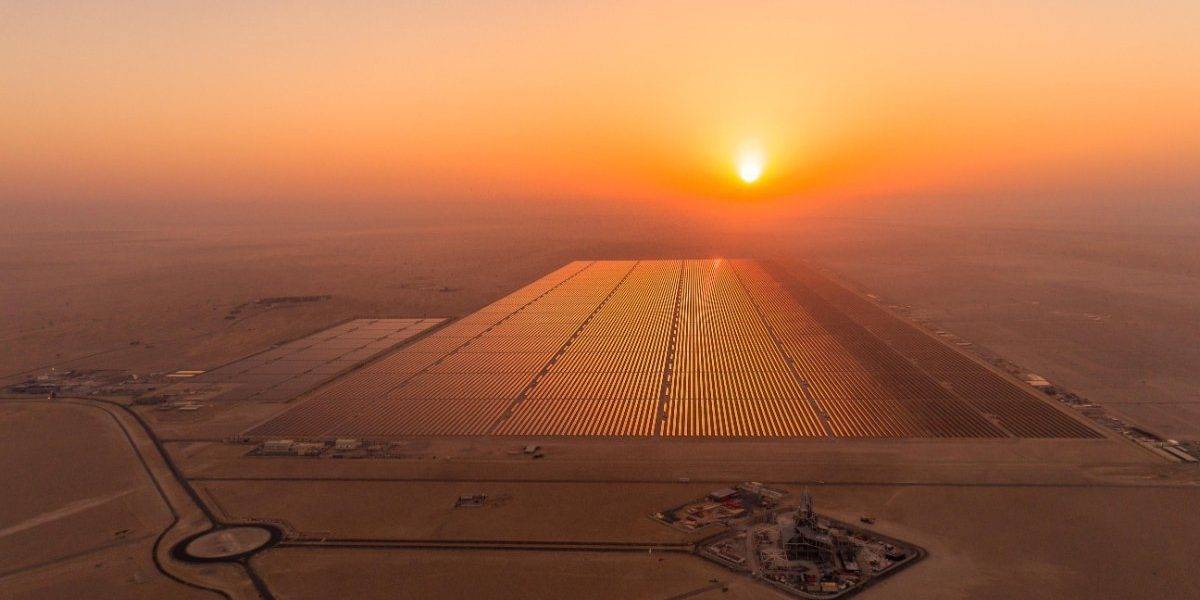Egypt’s USD 2 Bn Benban Solar Park Is One Of The World’s Largest Renewable Energy Projects

At a site in Egypt’s Western Desert, about 650 km south of the capital Cairo, one of the world’s largest and most ambitious solar energy projects is in progress, with expectations that it would be completed this year.
Christened the Benban Solar Park, the USD 2 Bn facility will produce enough power for one million homes and trigger a close working relationship between the Egyptian government and private enterprises in the North African country.
The elaborate project has been funded, in part, by the World Bank Group, which invested USD 635 Mn through the International Finance Corporation. While some sections of the solar park are already operating on a small scale, other areas are yet to go underway. The group also gave the country’s SME sector USD 200 Mn last month.
Dancing To The Rhythm Of Its Own Drum
Benban, upon completion, will house some 32 power stations and generate up to 1,650 megawatts of electricity. This move is particularly significant because the country aims to hit its target of having 20 percent of its energy from renewable sources by 2022.
Egypt who also aims to take the clean energy dependency to 40 percent in 2035, drives to re-attract the investors who turned their backs on the country after the 2011 uprising. With plans to reform its economy and better its incentives, the government of the country also drives to lure in fresh capital and accelerate growth.
Per fostering ties, Benban solar project is being made possible by a consortium of 13 private enterprises who are unanimously collaborating with the Egyptian public sector. When fully operational, the solar park will impact the economic nerve and policy-making of the country.
Egypt currently runs a load of costly fuel subsidy schemes that amount to more than it spends on education, healthcare and social welfare combined. So, when the project is a success, there will be a series of positive changes in the way the country spends its money.
“Egypt’s energy sector reforms have opened a wider door for private sector investments,” World Bank President David Malpass said during his visit to the site alongside Egyptian Investment Minister Sahar Nasr.
The bulk of Egypt’s foreign direct investment goes into its energy sector. In addition to World Bank’s financial commitment to the project, the Multilateral Investment and Guarantee Agency (MIGA) another part of the WBG, provided USD 210 Mn worth of political risk insurance to private lenders and investors.
A More Off-Grid-based Planet
Across the world, the craze for renewable energy is heating up, as evident in the number of off-grid investments and solar parks that are either still be built or have been completed. Africa, for one, has attracted plenty of solar investments from different companies looking to improve access to electricity in rural areas.
Reported to go live next year, there is a USD 9 Bn Noor complex in the Moroccan desert that’s expected to generate around 850 megawatts, and that could be sufficient to electrify more than 1 million homes. West Africa’s largest solar farm, which cost about USD 315 Mn was launched two years ago in Burkina Faso.
On the foreign scene, the Ladakh solar farm in India is due to be completed in 2023 and is expected to produce 3,000 megawatts of power, which if accomplished, will make the project the world’s largest in power generation.
In New South Wales in Australia, Yarrabee Park has been set aside for a solar power project that will produce some 900 megawatts of electricity. Dubai, touting its own version of clean energy as the largest single-site solar power facility on the planet, says the Mohammed bin Rashid Al Maktoum Solar Park will generate 1,000 megawatts by 2020 and 5,000 by 2030.
Interestingly, Egypt is not banking on just renewable energy, even though the country has an impeccably sunny and hot climate. The country has its eyes set on extensive wind farms on the Red Sea and the Gulf of Suez, with hopes to have a nuclear power plant – a Russian-funded 4,800 MW capacity project at Dabba – functional by 2026.